Occupational Environment Monitoring at the Vacuum Machine Manufacturing Factory
99,000 ₫
Note: The above price is calculated for one sample, and the price may fluctuate depending on the area of the environment to be monitored and market movements. For more accurate pricing support, please refer to the pricing table or contact our consulting staff directly.
Environmental monitoring of a vacuum machine manufacturing factory is a session of collecting, analyzing, and evaluating workplace factors that may be harmful to workers’ health.
Table of Contents
Toggle1. Overview of Vacuum Machine Manufacturing Factory
a. What is a vacuum machine manufacturing factory?
Manufacturing factory for vacuum machines is a production facility specialized in manufacturing various types of vacuum machines. A vacuum machine is a device used to create negative pressure in a space to remove air and liquids from a specific area. Vacuum machines are commonly used in multiple industries such as medical, electronics, food and beverage, chemical processing, and many other fields.

b. Production stages in a vacuum machine manufacturing factory
In a vacuum machine manufacturing factory, production stages may include:
- Design and research: Engineers and designers develop new designs for vacuum machines based on different requirements and applications.
- Procurement and material input: The factory purchases necessary components and accessories such as motors, controllers, filters, valves, pipes, outer casings, and other parts from suppliers.
- Processing and manufacturing: Components and accessories are processed and assembled into vacuum machines. The production process may include cutting, welding, CNC machining, assembly, quality inspection, and operational testing.
- Inspection and quality control: Assembled vacuum machines undergo inspection and testing to ensure proper functionality and compliance with quality standards.
- Packing and transportation: Vacuum machines are carefully packed to ensure safety during transport and delivery to customers.

c. Types of machinery used in a vacuum machine manufacturing factory
In a vacuum machine manufacturing factory, various machinery and equipment are used for different production stages. Common types of machinery include:
- Metal cutting machines: Used to cut and process metal parts required for vacuum machines, including plasma cutters, laser cutters, and CNC cutters.
- Welding machines: Used to weld metal components together. Common welding machines include spot welders, MIG/MAG welders, TIG welders, and resistance welders.
- CNC machining machines: Used to process metal and plastic parts according to precise designs. CNC machines perform operations such as cutting, milling, turning, and grinding.
- Compression machines: Used to compress air or liquids during vacuum pressure creation.
- Vacuum pumps: Used to create vacuum pressure by removing air or liquids from the space.
- Air compressors: Provide power to other equipment, such as compression machines and vacuum pumps.
- Testing and inspection machines: Used to evaluate the quality, performance, and operation of vacuum machines.
- Plastic processing machines: Used to manufacture plastic parts required for vacuum machines, including plastic presses, injection molding machines, and CNC plastic machining.

d. Occupational diseases that may occur for workers in a vacuum machine manufacturing factory
Workers in a vacuum machine manufacturing factory may be exposed to some occupational diseases related to environmental and work factors. Common occupational diseases include:
- Respiratory diseases: Workers may be affected by dust and fumes during vacuum machine production, increasing the risk of pneumonia, asthma, sinusitis, and other respiratory problems.
- Skin diseases: Exposure to chemicals, oils, and cleaning agents can cause skin irritation, dermatitis, eczema, infections, and other skin issues.
- Ear diseases: Working with vacuum machines in noisy environments may cause ear damage, hearing loss, tinnitus, and balance problems.
- Hand and neck diseases: Tasks involving tools, machines, and equipment may cause stress, injury, or inflammation of muscles, tendons, and joints of hands and neck.
- Spinal and back problems: Work involving heavy lifting, awkward postures, or stress can lead to back pain, disc degeneration, and other spinal issues.
To reduce the risk of occupational diseases, safety and health measures should be applied, including using appropriate personal protective equipment and ensuring proper ventilation.

e. Common types of vacuum machines on the market
There are many types of vacuum machines available, including:
- Household vacuum machines: Compact machines for household use, such as vacuum-sealing food, preserving beverages, or vacuum storage bags for clothing.
- Industrial vacuum machines: Used in industries such as food, pharmaceuticals, medical, and electronics. Industrial vacuum machines have large capacity and withstand harsh working conditions.
- Medical vacuum machines: Used in hospitals, operating rooms, and medical facilities for vacuum applications during surgery or treatment.
- Electronics vacuum machines: Used in the production and storage of electronic components like circuit boards, chips, and small electronic devices.
- Industrial vacuum machines for food processing: Used for vacuum packaging and food preservation in the food processing industry.
- Chemical processing vacuum machines: Used for processing, storing, and transporting chemicals and liquids prone to evaporation or oxidation.
- Printing industry vacuum machines: Used to remove air during printing to ensure high print quality.
2. Overview of Occupational Environment Monitoring Services
a. What is occupational environment monitoring in a vacuum machine manufacturing factory?
Occupational environment monitoring (or workplace environment measurement) in a vacuum machine manufacturing factory is the activity of collecting, evaluating, and analyzing workplace environmental factors at the factory to implement timely measures, minimize environmental harm to workers’ health, and prevent occupational diseases. Occupational environment monitoring is mandatory for vacuum machine manufacturing factories.
It plays a crucial role in caring for, protecting, and improving workers’ health because the main resource of a company, which directly generates profit, is its workforce. Workers who are frequently exposed to hazardous factors exceeding permissible limits are at risk of health issues and occupational diseases.
REGISTER FOR OCCUPATIONAL ENVIRONMENT MONITORING SERVICE
b. Nam Viet’s occupational environment monitoring program
Nam Viet’s occupational environment monitoring program is developed by monitoring engineers in the fields of occupational safety and environmental protection. Aiming to ensure worker health and safety, the program uses modern measurement methods to monitor air quality, water quality, and microclimate, physical, and dust factors in the workplace. This program is crucial to ensure a safe working environment and protect workers’ health.
Additionally, Nam Viet’s program plays an important role in researching and developing new solutions to improve workplace environmental quality. With the dedication and professionalism of the monitoring experts, Nam Viet’s exclusive program is becoming a breakthrough in occupational safety and environmental management in Vietnam.

c. Standardization in occupational environment measurement procedures
Standardization in Nam Viet’s occupational environment measurement procedures is crucial for ensuring the accuracy and reliability of results. To ensure reliable measurements, the program uses recognized standards and procedures from the Ho Chi Minh City Department of Health. This ensures that collected data can be used reliably for workplace assessments and decisions to improve workers’ health and safety.
These standardized procedures also guarantee that measurements are performed by highly qualified monitoring experts with years of experience, allowing managers and specialists to trust results from An Toan Nam Viet and make accurate, valuable decisions for protecting workers and the environment.
By applying standardization in measurement procedures, Nam Viet demonstrates its commitment to ensuring a safe working environment and worker health while contributing to improving occupational safety and environmental management in Vietnam.
d. Report on occupational environment monitoring results in vacuum machine manufacturing factories
Monitoring results are prepared according to Form No. 04, Appendix III issued with Decree 44/2016/ND-CP and prepared in two copies: one sent to the contracted workplace and one kept at the monitoring organization.
The retention period for monitoring results is indefinite according to legal regulations.

e. Frequency of occupational environment monitoring as per legal regulations
According to Clause 2, Article 18 of the Law on Occupational Safety and Health 84/2015/QH13, employers must organize occupational environment monitoring to evaluate harmful factors at least once a year.
f. Deadline for submitting occupational environment monitoring reports
The report must be submitted before December 31 each year. Enterprises operating production facilities are required to submit monitoring results to the local Department of Health where the main office is located and where employees work.
When there are changes in technology, production processes, or facility upgrades that may introduce new harmful factors to workers’ health, enterprises must update occupational hygiene records related to these harmful factors.
g. Penalties for employers violating occupational environment monitoring regulations
According to Article 27 of Decree No. 12/2022/ND-CP dated January 17, 2022, regarding administrative penalties in labor, social insurance, and Vietnamese employees working abroad under contracts:
- Clause 2: A fine of VND 2,000,000 – 5,000,000 for employers who fail to publicly inform employees at the monitoring site and workplaces about the results immediately after receiving monitoring results and hazard evaluation results.
- Clause 3: A fine of VND 20,000,000 – 40,000,000 for employers who fail to conduct occupational environment monitoring to control harmful effects on workers’ health according to the law.
- Clause 4: A fine of VND 40,000,000 – 60,000,000 for employers collaborating with monitoring organizations to commit fraud in occupational environment monitoring without reaching criminal liability.
3. Harmful Environmental Factors for Workers in a Vacuum Machine Manufacturing Factory
Some harmful environmental factors may exist in a vacuum machine manufacturing factory and may affect workers’ health. Here are some key factors:
- Dust and particles: The production process of vacuum machines can generate dust and small particles from materials and machining processes. Without proper dust and particle control measures, workers may inhale them, causing respiratory issues and other health problems.
- Chemicals: Vacuum machine production may involve the use of chemicals such as solvents, adhesives, and cleaning agents. Exposure to these chemicals can cause irritation to the skin, eyes, and respiratory system and may lead to health issues if not managed and used properly.
- Noise: Machinery and production processes in the factory can produce high levels of noise. Prolonged and uncontrolled noise exposure can affect hearing and cause related health issues, such as stress, insomnia, and difficulty concentrating.
- Temperature and humidity: Some vacuum machine production processes may generate high temperatures and humidity. Working in overly hot or humid environments can cause heat stress and make it difficult to maintain comfort and work performance.
- Voltage and electrical safety: Vacuum machine production may involve working with high voltage and complex electronic equipment. This requires workers to be trained in electrical safety and to comply with relevant regulations to prevent electrical hazards and accidents.
REGISTER FOR LABOR ENVIRONMENT MONITORING SERVICE
4. Measures to Improve Working Conditions in a Vacuum Machine Manufacturing Factory
To improve the working environment in a vacuum machine manufacturing factory and protect workers’ health, the following measures can be implemented:
- Dust and particle management: Ensure good industrial hygiene and effective dust extraction systems to minimize airborne dust and particles. Use personal protective equipment such as masks and safety goggles to protect respiratory systems and eyes from dust and particles.
- Chemical management: Use chemicals safely and properly according to the manufacturer’s instructions. Ensure proper ventilation and effective exhaust fans to reduce airborne chemical exposure. Train workers on safe chemical handling, personal protective equipment, and proper waste disposal.
- Noise control: Use noise-reducing equipment or soundproof materials to reduce noise. Ensure workers are provided with hearing protection and comply with regulations regarding noise safety.
- Temperature and humidity management: Provide an effective air conditioning system to regulate temperature and humidity in the workplace. Ensure proper ventilation and sufficient natural light in the factory to create a comfortable working environment.
- Training and guidance: Train workers on occupational safety, the use of personal protective equipment, and compliance with safe work procedures. Provide proper instructions on the use of machinery and equipment during production.
- Electrical safety management: Ensure a safe electrical system and periodically inspect electrical equipment, while training workers on electrical safety and hazard prevention.
- Periodically conduct labor environment monitoring in the factory, collect and analyze harmful factors for workers, and adjust to reduce hazards to prevent occupational diseases.
5. Benefits of Periodic Monitoring of Vacuum Machine Manufacturing Factories
An Toan Nam Viet provides businesses with excellent benefits when using labor environment monitoring services according to Decree 44/2016/ND – CP regarding the management and control of harmful factors in the working environment affecting workers.
- Businesses can proactively control harmful factors in the workshop or factory.
- Receive advice and recommendations on measures to reduce harmful factors and improve the quality of the working environment.
- Indirectly protect human resources, the key factor in business development.
- Minimize the impact of occupational diseases on human health, reducing future treatment costs.
- Improved worker health leads to consistent product quality and output.
- Comply with occupational safety laws, avoiding legal risks.
- Create credibility and professionalism in all aspects, enhancing the company’s brand value.
Nam Viet’s environmental monitoring service is a solution to reduce the impact of occupational diseases, contributing to a clean and high-quality working environment.

6. National Labor Environment Monitoring Center
Labor Environment Monitoring Center of Nam Viet is a professional unit specializing in supervising and measuring labor environment quality throughout all provinces in Vietnam. With a team of experienced monitoring specialists, the center uses modern measuring equipment, ensuring accuracy and reliability.
In addition to providing monitoring services, the center supports clients in planning, handling, and tracking labor environment issues. With the motto “customer-centric,” the center focuses on customer satisfaction, meets all client needs, and commits to providing the best solutions for businesses.
REGISTER FOR LABOR ENVIRONMENT MONITORING SERVICE
With investment in technology, equipment, and human resources, Nam Viet’s monitoring center has become a reputable unit in labor environment monitoring in Ho Chi Minh City with the following objectives:
- We always value our brand reputation and the quality of our service products.
- We provide clients with the best and most suitable services possible.
- Along with a team of experienced Masters and Engineers with expertise, aiming to protect the environment and benefit businesses.
- By working with Nam Viet Environmental Monitoring, your company will receive professional service from experts in the field, as well as the best cost incentives.
The labor environment monitoring process at Nam Viet includes the following basic steps:
- Before performing labor environment monitoring, our company ensures that machinery and equipment for monitoring are calibrated and adjusted according to legal regulations.
- Perform the labor environment monitoring process fully and correctly as committed to the Department of Health.
- Honestly report labor environment monitoring results to the employer.
- If the monitoring results indicate unsafe conditions for workers, Nam Viet will provide solutions, and the workplace will implement:
- Implement measures to improve working conditions to minimize the impact of harmful factors and prevent occupational diseases.
- Organize health check-ups to detect occupational and related diseases early for workers in positions with unsafe working conditions.
- Provide in-kind compensation to workers in accordance with labor law regulations.

7. Labor Environment Monitoring Price List
To help businesses conduct labor environment monitoring professionally and effectively, Nam Viet provides clients with a labor environment monitoring service price list that is high-quality and reasonably priced.
- Our price list provides detailed information about the costs of the monitoring services we offer, including costs related to travel, measurement, analysis, and reporting of results. Clients can be fully assured of the accuracy and reliability of the monitoring reports we provide.
- We are committed to providing the most competitive and reasonable prices on the market and are always ready to consult and answer any questions about monitoring services quickly and professionally.
- With Nam Viet’s monitoring price list, clients can easily select service packages that meet their needs. We are committed to delivering the highest client satisfaction with professional service quality.
No comments yet

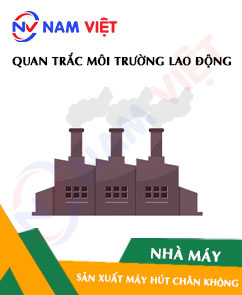
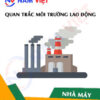
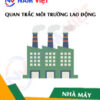
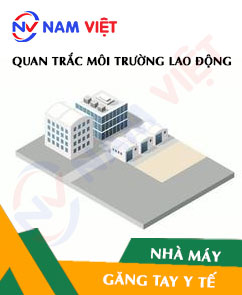
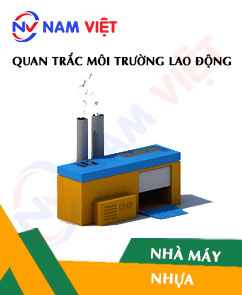

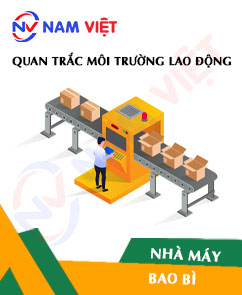



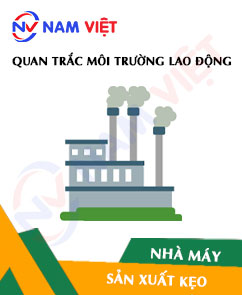
Review Occupational Environment Monitoring at the Vacuum Machine Manufacturing Factory
There are no reviews yet.